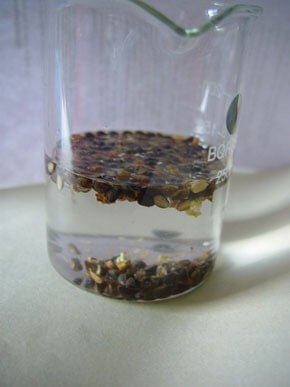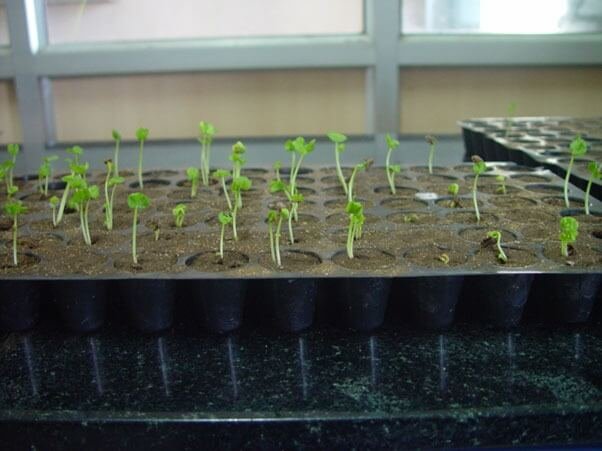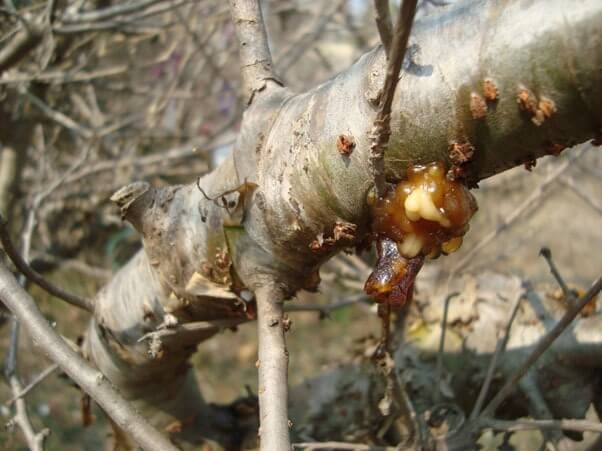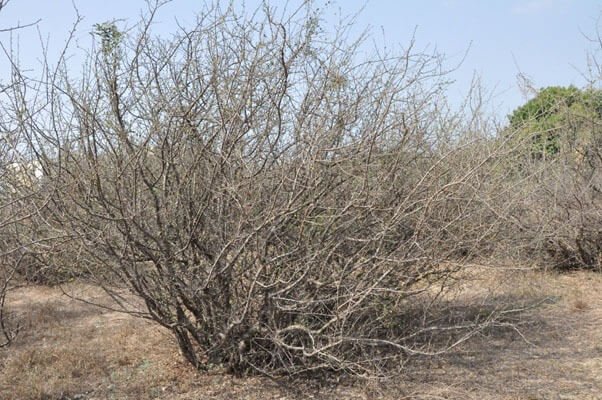Guggul (Commiphora wightii) with Depth Information :
Guggul is a dioecious or polygamous shrub or small tree belonging to family Burseraceae. Its oleo-gum resin is medicinally important. Extraction of the oleo-gum resin leads to death of the plant. Due to over exploitation, the species is threatened in its natural habitat and is enlisted in critically endangered category in the IUCN Red Data Book.
Distribution: It is found in arid regions of Rajasthan, Gujarat and Madhya Pradesh in India and adjoining areas of Pakistan and Afghanistan.
Chemical constitutes: Gum (32%), Sterols (E and ZGuggulsterones), sugars (Sucrose, Fructose), amino acids, Cembrene, Flavonoids (quercetin and its glycosides) and essential oil.
Uses: The plant yields oleo-gum resin which is highly valued for its antiarthritic, hypocholesterolemic and hypolipidaemic (that lowers the blood cholesterol level) properties in the Indian system of medicine.
Climate and soil: The species grow best in soils poor in organic matter with low N and P but high in K, Fe, Mu, Zn and Cu. It grows luxuriously under extreme temperature (summer 400 C and winter touching zero) with low rainfall (10-40 cm) but abundant sunshine.
Propagation of Guggul :
Vegetative propagation is done by stem cuttings of about 20-25 cm long and 1.0-1.5 cm diameter having a few nodes are selected and dipped into 150-200 ppm IBA solution overnight. These cuttings are planted in polybags filled with potting mixture with two lower nodes keeping deep inside the soil. Due to regular irrigation 70-80% cutting success can be expected. After six months the cuttings are rooted and ready for transplantation. The termite damage is controlled by the drenching of chloropyriphos @5ml in 10 litres of water.
For seed propagation the ripened fruits are collected from the mother plants and the pulpy wall of the fruits are removed by rubbing within the fold of cloth. The cleaned stony fruits are used for propagation for commercial cultivation. In Guggul the fruit filling is very low so the unfilled fruits (stones) are removed by floating on water. The sedimented stones are used for germination in polybags. Due to polyembryony more than two seedlings emerge per seed. Germination rate of the filled seeds is about 50-70%. Six-month-old seedlings can be transplanted to the field.
Cultivation of Guggul :
Cultivation is done mainly in forest areas of Kutch in Gujarat and Rajasthan. It can be also used as hedge plant in the farm areas of dry arid areas.
For plantation, the field is well prepared by deep ploughing. About 2500 plantlets are required for one hectare. The pits of 30 cm x 30 cm x 30 cm size are dug out at 2m x 2m spacing and filled with farm yard manure (5kg/pit). A light irrigation before planting, followed by one irrigation/month are given till next rainy season. For controlling the termites chloropyriphos @5 ml in 10 litre of water is recommended.
Harvesting of Guggul :
Harvestingofoleo gum resin is done by the process called tapping when the plants are about 5-8 years. The harvesting is done during autumn (December-February). The tapping is done by making a deep incision on the main stem on multiple sites with the help of sharp knife. Gum starts oozing out after few days from these sites. The gum oozing is due to gummosis caused by Xanthomonas axonopodis pathogen which is present in the freshly collected guggul gum and act as inducer for gum oozing. The flow of gum starts 3-7 days after tapping and is completed in next 30-45 days. Two to three collections of gum are possible in a season. The collected oleo gum resin is pale yellow aromatic sap and upon hardening it turns golden-brown to reddish-brown mass. It is kept under low temperature (below 300C) and away from direct sunlight to keep the quality at optimum level.
It was reported that use of 400 mg of ethephon (2-chloroethyl phosphoric acid) fed to the roots through the injection can increase the flow of gum and maximize the yield significantly. The yield of the oleo gum resin is dependent on the genotype, age of the plant, thickness of the main trunk etc. Generally, a Guggul plant of about 5-8 years old yields an average of about 200-800 gm oleo-gum resin per plant. Once the gum oozing is over the entire tree dies within 8-10 months after yielding the gum. At present market value of Guggul gum is about ₹1000-1500/kg.

Unfilled stones are removed by floating 
Seedlings germinated in the tray 
Guggul gum exudate 
Guggul plant habit
Adulteration of Guggul :
The guggul gum is adulterated by using other gums like Katira (Sterculia urens), Salai guggul (Boswellia serrata), Senegal (Acacia senegal), etc.
Important note
once the gum yield is over, the plant dies and the pathogen Xanthomonas axonopodis affects all the nearby guggul plants. So it is recommended that all the natural Guggul conservation sites should be strictly protected away from the Guggul cultivation sites.
Economics
The price of Guggul at Delhi market is Rs. 1500/kg (during the year 2018 to 2021)
https://echarak.in/echarak/marketwise1.do
References:
Dr.K.A.Geetha (2019) Handbook of Horticulture (II edition), ICAR- DKMA Publishers,(Vol 2), Pp. 918-919
B.NShah and A.K. Seth (2010) Text book of pharmacognosy & Phytochemistry, pp-330






0 Comments